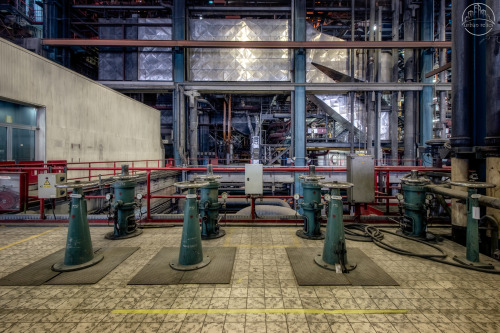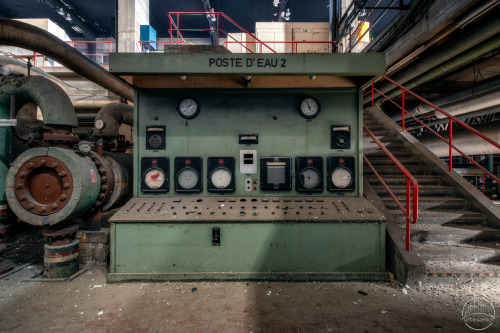GREEN POWER - PART I : THE TURBINE HALLPowering large industrial sites requires a lot of energy. It
GREEN POWER - PART I : THE TURBINE HALLPowering large industrial sites requires a lot of energy. It is therefore not surprising that large power stations are located in the vicinity of large industrial areas. This also applies to this power station, which was built in the vicinity of the Liège industry. Construction started shortly after World War II and the first coal-powered units were commissioned in the early 1950s. They each produced 55 MW. From the mid-1960s, two additional units were built, fueled by gas and with a capacity of 130 MW each. Finally, a fifth unit followed in the mid-1970s, reaching a capacity of 300 MW. Just before the turn of the millennium, the three oldest units were shut down and the gas-fired fifth unit was kept as a reserve unit. The unit that is the subject of this series underwent a thorough metamorphosis, in which a switch was made from fossil fuel to 100% biomass. The plant is traditionally built with a boiler room, where the biomass was prepared and burned to generate steam. This steam was then sent to the adjacent turbine hall, where the turbines were driven, which in turn drove the alternators that generated the electricity. There are 5 turbines in the turbine hall: two Brown Boveri, two Rateau-Schneider and one Stork. In mid-2020, after 15 years of service as a biomass power station, this last unit was also shut down when the decision was made to build a new gas-fired power station. -- source link
#urban exploration#urban explorers#urbanexploration#urbanexplorers#urbanexploringphotography#urbexworld#urbexpeople#urbexphotography#industry#industrial#power plant#biomass#green power#abandoned#abandoned places#abandonedaddiction#abandophiles#derelict#photography#photooftheday#canonphotography#urban relics#belgium









